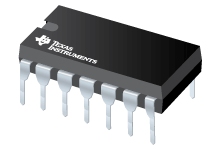Integrated Circuits
Integrated circuits can be classified into analog, digital and mixed signal (both analog and digital on the same chip).
Digital integrated circuits can contain anywhere from one to millions of logic gates, flip-flops, multiplexers, and other circuits in a few square millimeters. The small size of these circuits allows high speed, low power dissipation, and reduced manufacturing cost compared with board-level integration. These digital ICs, typically microprocessors, DSPs, and microcontrollers, work using binary mathematics to process “one” and “zero” signals.
Analog ICs, such as sensors, power management circuits, and operational amplifiers, work by processing continuous signals. They perform functions like amplification, active filtering, demodulation, and mixing. Analog ICs ease the burden on circuit designers by having expertly designed analog circuits available instead of designing a difficult analog circuit from scratch.
ICs can also combine analog and digital circuits on a single chip to create functions such as A/D converters and D/A converters. Such mixed-signal circuits offer smaller size and lower cost, but must carefully account for signal interference.
Modern electronic component distributors often further sub-categorize the huge variety of integrated circuits now available:
Digital ICs are further sub-categorized as logic ICs, memory chips, interface ICs (level shifters, serializer/deserializer, etc.), Power Management ICs, and programmable devices.
Analog ICs are further sub-categorized as linear ICs and RF ICs.
mixed-signal integrated circuits are further sub-categorized as data acquisition ICs (including A/D converters, D/A converter, digital potentiometers) and clock/timing ICs.
Showing 1–16 of 735 results
-


Digital IC (Series: 4000 and 74) (375)
-


Linear IC (376)
-

4001 SMD
Read more -


4001
Read more -


200D6 SMD
Read more -


ULN2803 SMD
Read more -


LM358D
Read more -




LM339D
Read more -



PL2303HX SMD
Read more -




PC817 – 16 pins – SMD
Read more -



NCV7708B
Read more -


PC817 – 16 pins
Read more -


DS3231 SMD
Read more -




MAX3232ESE+T
Read more -


4007
Read more -




ULN2003AD
Read more -




LM324D
Read more -




TL074 SMD
Read more
